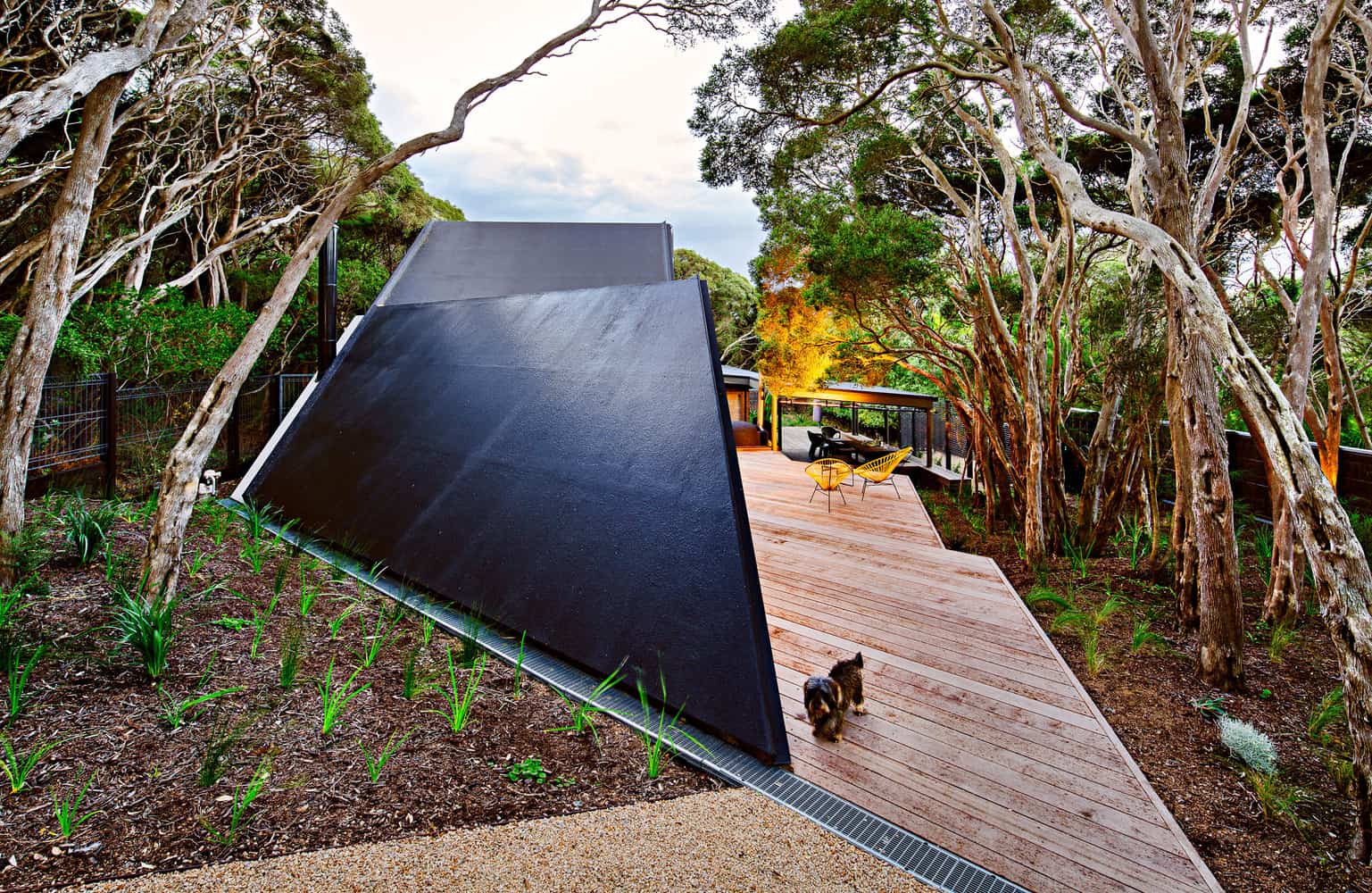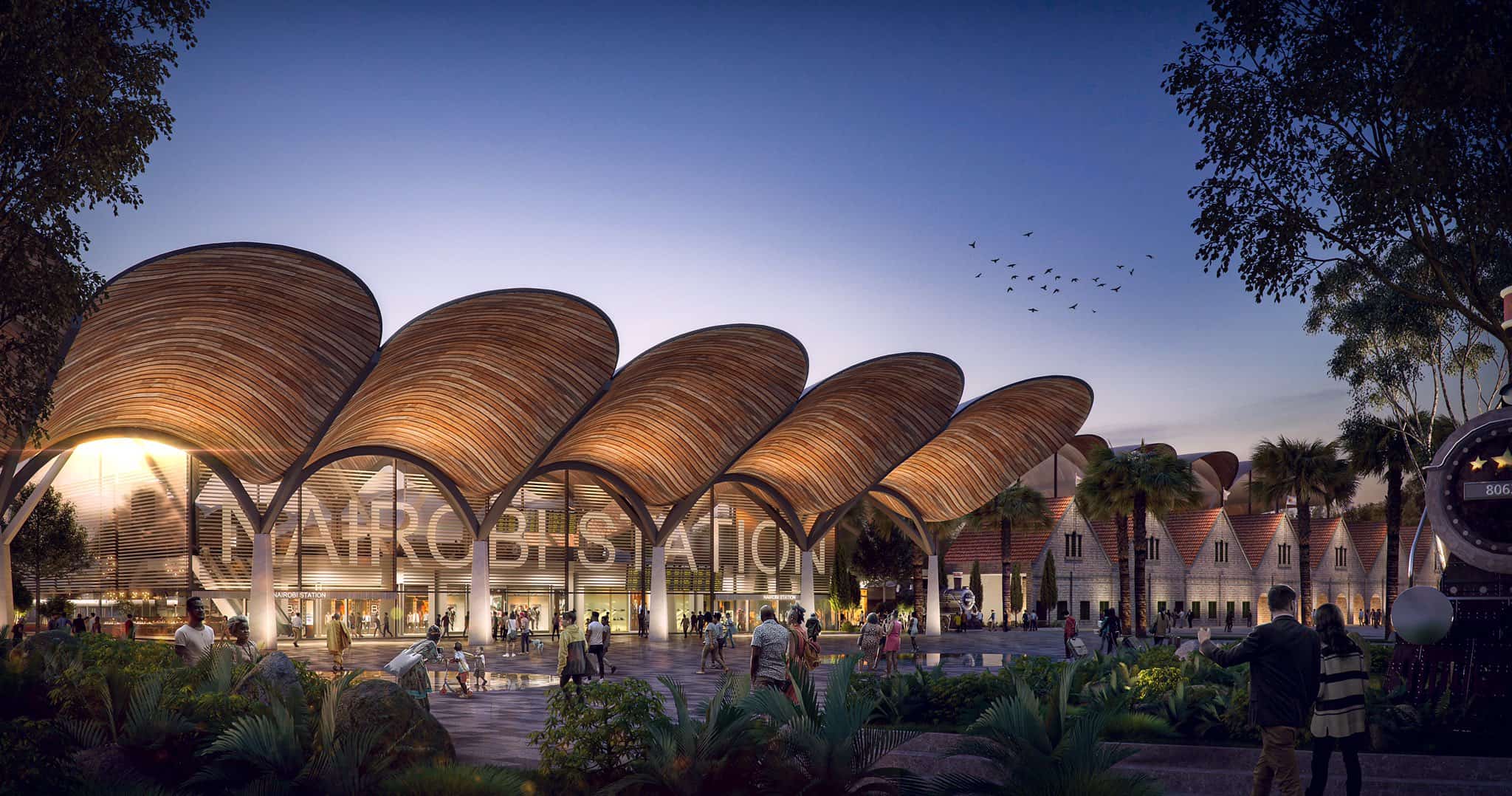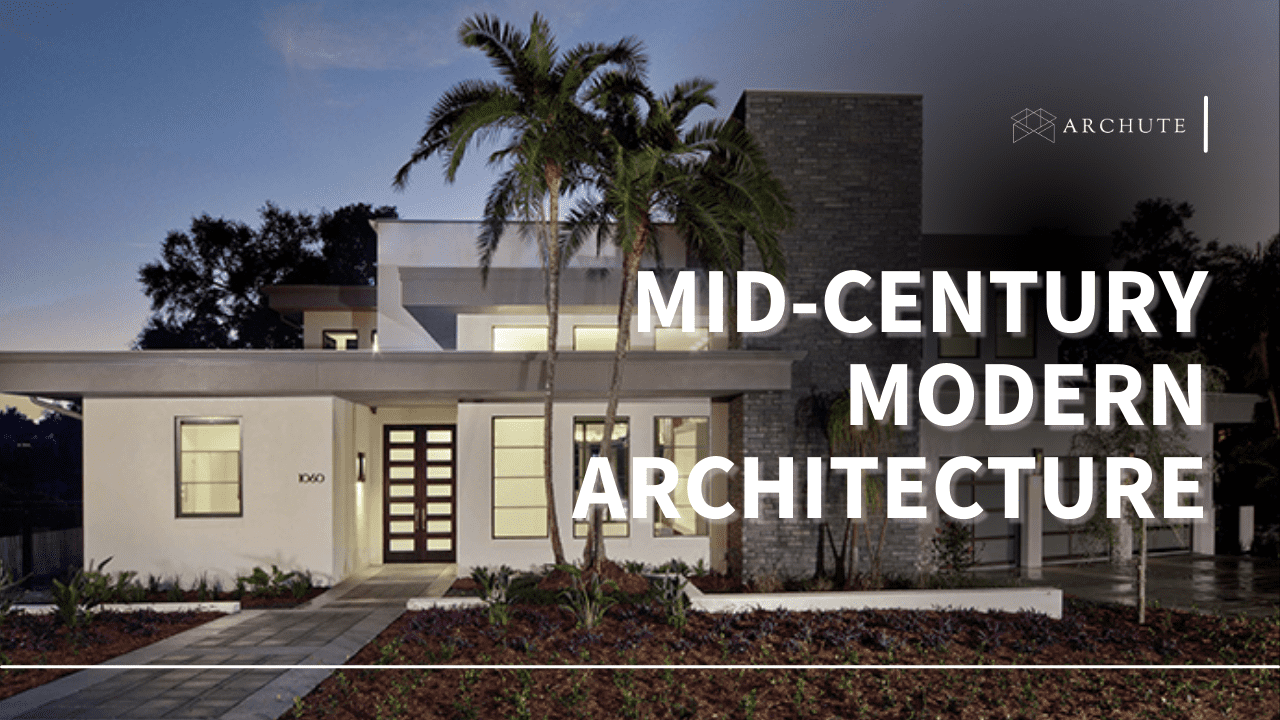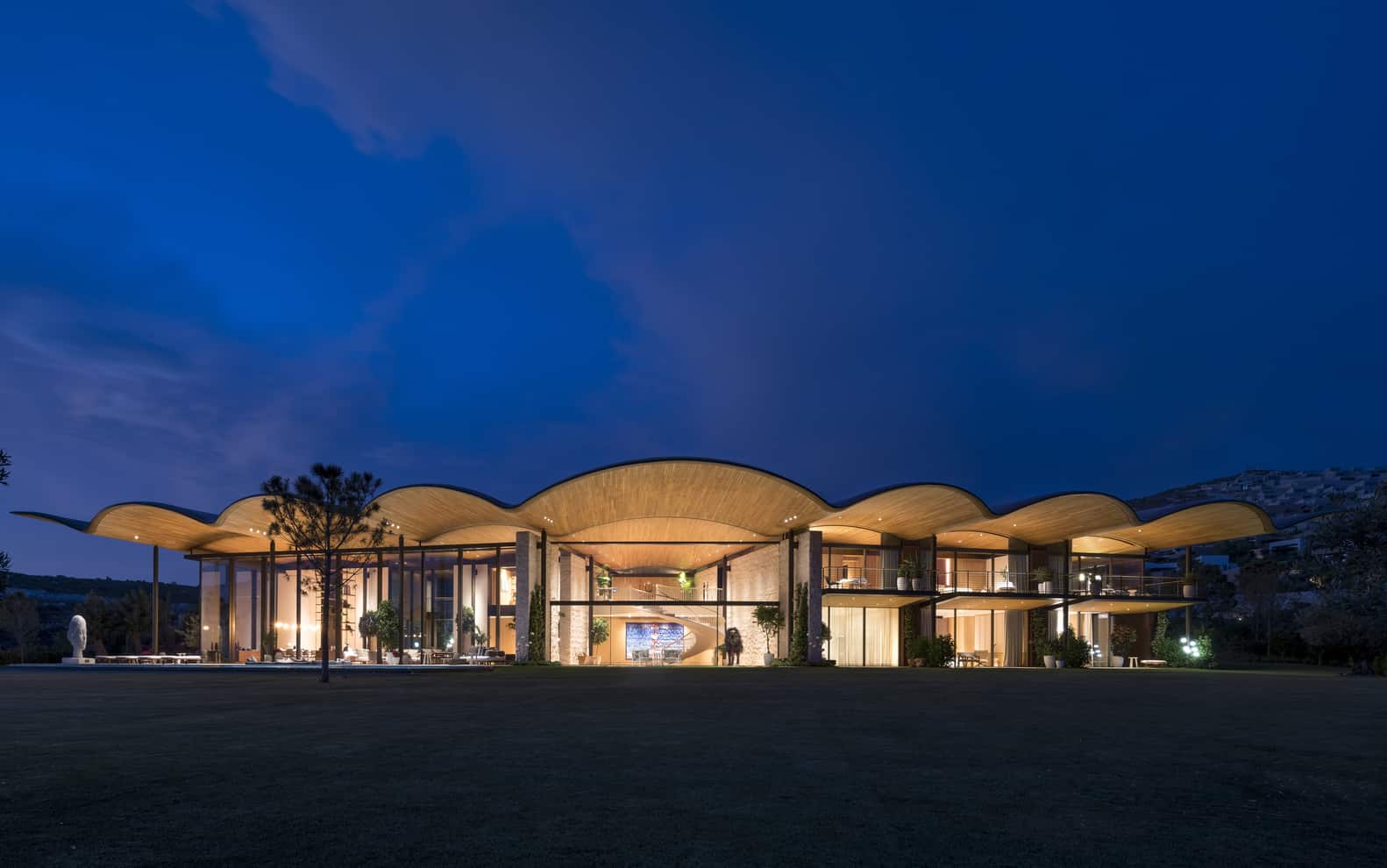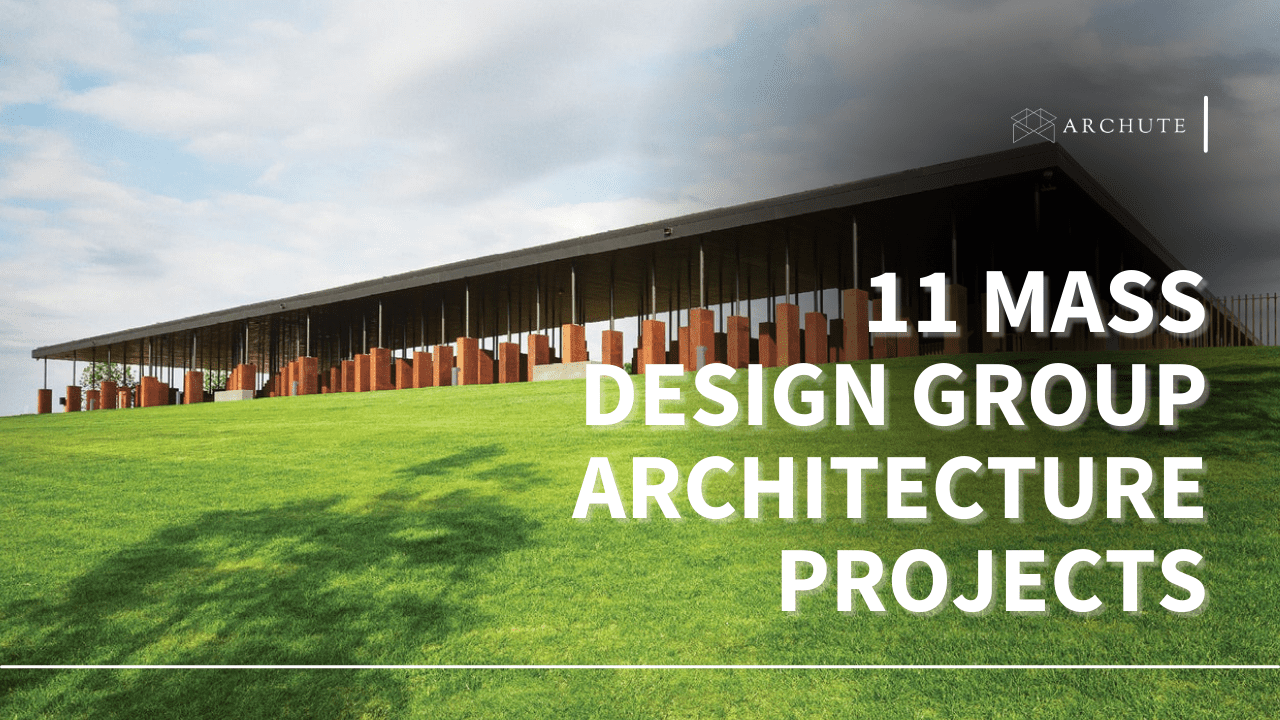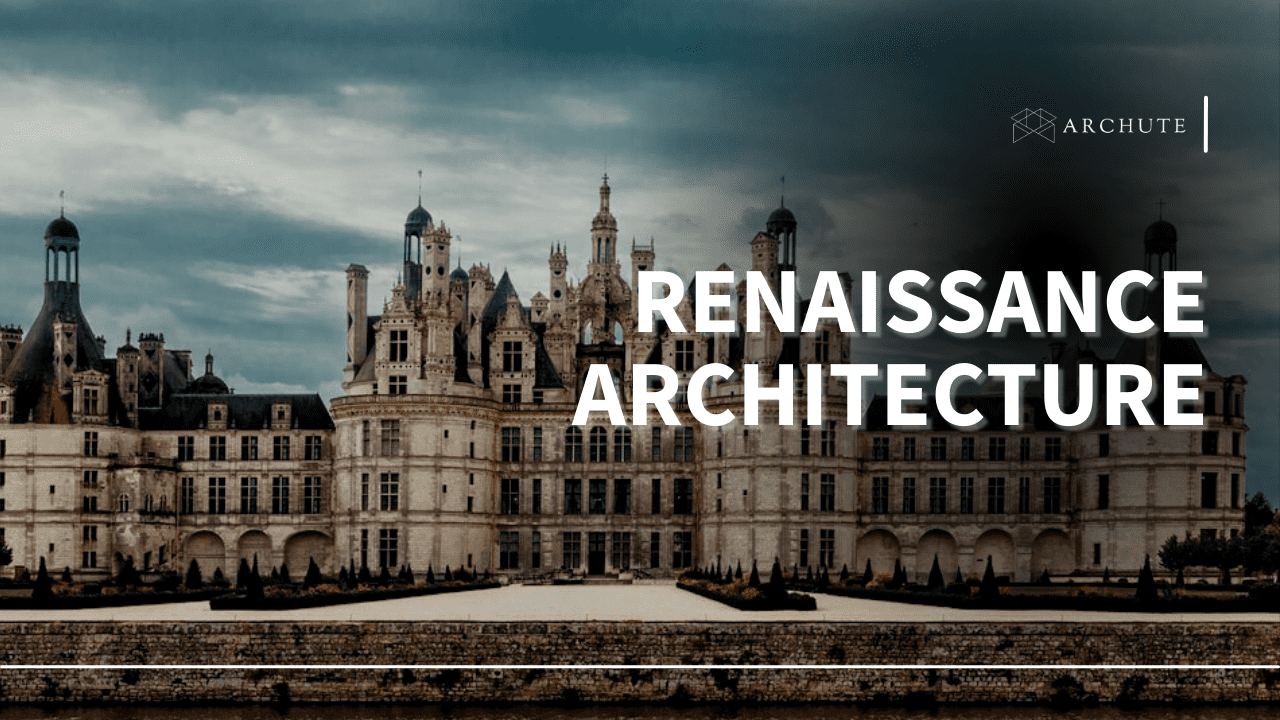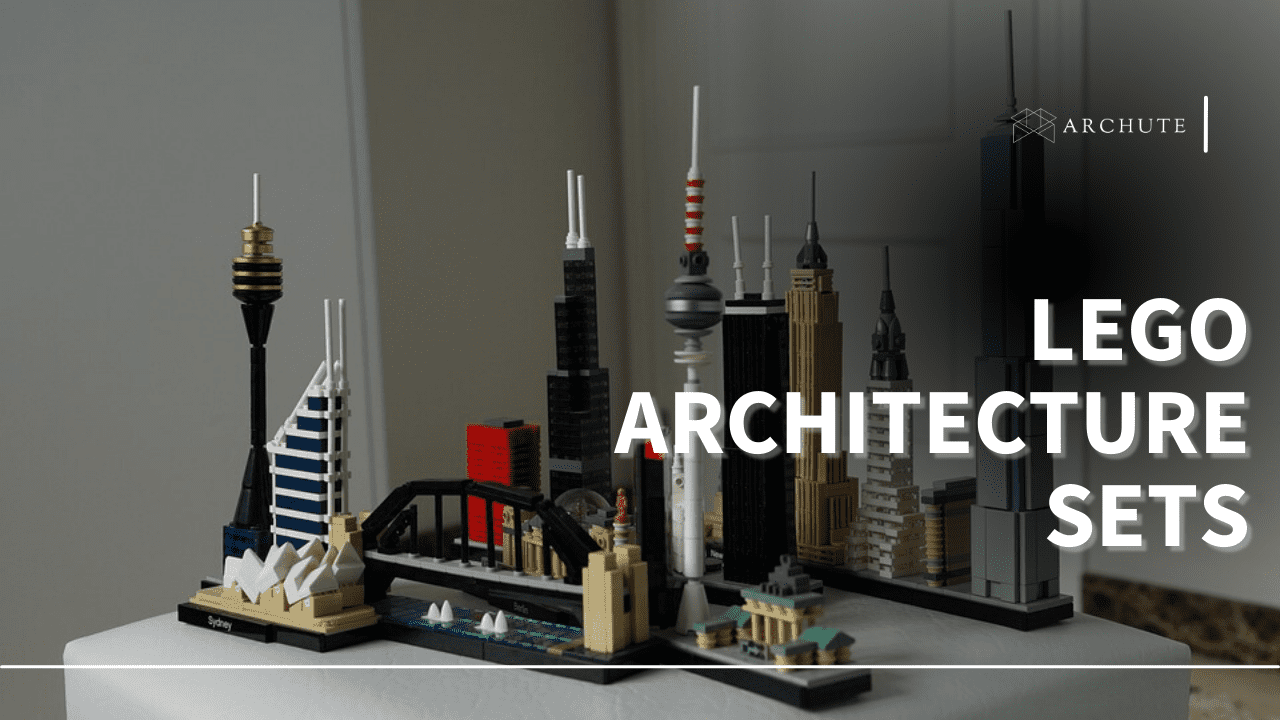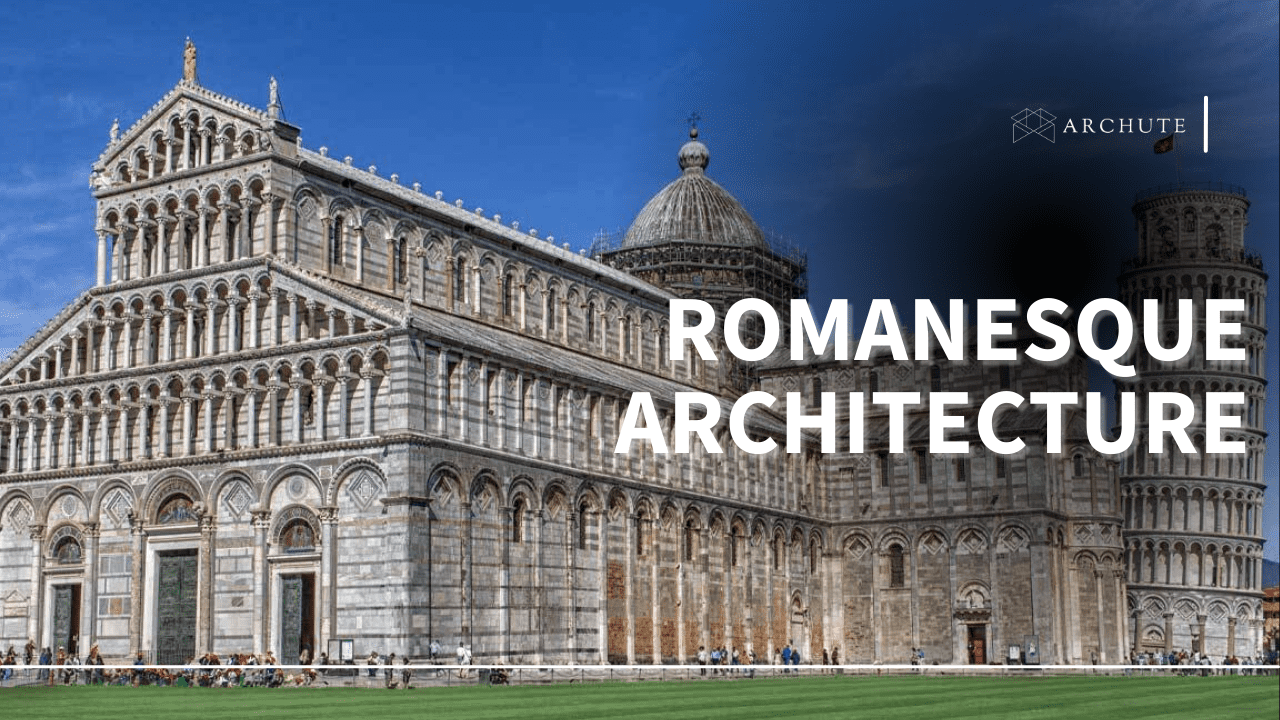Cabin 2, an extension of a vintage log cabin, finds its place amidst a dense forest in Victoria, Australia, an area known for its abundance of holiday residences.
Melbourne-based Maddison architects designed the new cabin to sit in contrast to the old building and connected by an internal passageway. Instead of designing the new cabin to carry the aspects of the old one and have a sense of continuation in design, the architects chose to separate both cabins in a transitional manner that would immensely indicate transition from the old to the new cabin.
According to the architects, the intention was to allow both buildings to express their individual identities without making one exist in the shadow of the other.
Installed deep into the coastal Moonah woodland forest, the building is among many holiday homes that have been designed to camouflage within the network of winding roads and unpredictable vegetation. The designs of the buildings contrast each other a lot, with the new one featuring cast concrete and angular timber while the old is characterized by continuous logs of timber in entirety.
The extension cabin houses a bedroom with an en-suite bathroom at the mezzanine floor, a living room, kitchenette and a hidden study on the ground floor. The mezzanine level has a very subtle but clear access to the deck. The old timber cabin slopes rather gently from the lowest part of the site to the top part which also builds up to allow for the provision of a mezzanine sleeping area in the extension cabin. The bending roof also provides aesthetic precision that impacts on the structure in a major way to show modernism, adventure and seamless fitting into the context of the site.
The building's location gave birth to a number of issues including ensuring the environment is maintained as it is for the most part and that the vegetation and trees surrounding the site are least affected by the decision to extend the cabin. In conjunction with the client, the architects ensured very few trees were removed from the site. Indigenous plants were also added onto the landscape and the destroyed plants during the construction process replanted to ensure that the landscape remained the most natural possible. New fencing lines were put up but camouflaged with plants to obscure the properties boundaries and carry on the views beyond the site without interference.
The client wanted the building's footprint to be very minimal despite the extension and the architects delivered that by digging a little deeper into the slope of the site to increase the buildings height rather than width. That way, the folding roof that grows out from the slope of the site creates a landmark that looks like a natural landform.
The floor consists of poured concrete while the slanting roof culminates to the top level where the is a bedroom and breathtaking views of the forest and hills beyond. The interior cladding consists of pale plywood lines which are on the underside of the roof. The indigenous plants in the garden open up to the decking that stretches the length of the building. Rooftop tanks have been installed to capture rain water which is in turn used to water the whole landscape including the garden.
Dark criss-crossing joists are left intentionally exposed to create angular framework which supports the large glass panes for bringing in light into the building and a bright red color for aesthetics.
Project Information
Architects:
Maddison Architects
Location: Blairgowrie, Victoria, Australia
Photography:
William Watt

